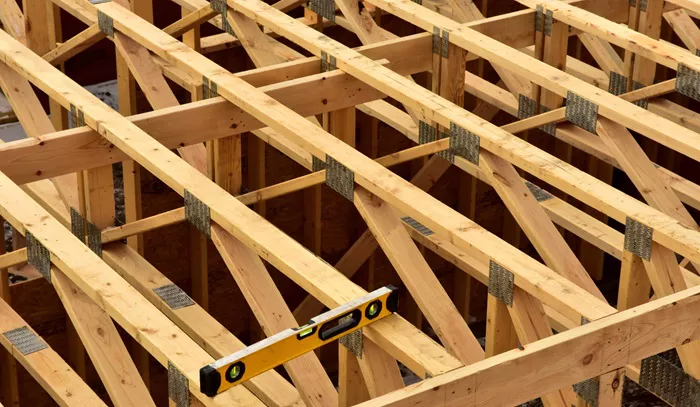In residential construction and remodeling, understanding the proper spacing of wall studs is crucial for ensuring structural integrity and providing adequate support for various applications. The distance between studs can impact everything from load-bearing capacity to the installation of drywall and other materials. Here’s an in-depth look at how far apart studs should be for optimal support and why this spacing matters.
1. Standard Stud Spacing for Residential Walls
In most residential construction, the standard stud spacing is 16 inches on center (OC). This means that the center of one stud to the center of the next stud is 16 inches apart. This spacing is a time-tested standard designed to balance structural strength and material efficiency. It provides sufficient support for drywall, insulation, and other wall materials, ensuring that the wall can bear typical loads such as shelves or cabinetry.
2. Alternatives to Standard Spacing: 24 Inches on Center
In some applications, especially in non-load-bearing walls or areas where additional cost savings are a priority, studs may be spaced 24 inches on center. This wider spacing is often used in areas where the wall doesn’t need to support significant weight or where cost efficiency is important. While this spacing is acceptable for many uses, it’s crucial to ensure that the wall will still meet building codes and support any planned fixtures or materials.
3. Load-Bearing Walls: Adjusting Stud Spacing for Strength
For load-bearing walls, which support the weight of floors, roofs, or other structures above, stud spacing may need to be adjusted based on the load requirements and building codes. In some cases, studs may be placed closer together, such as 12 inches on center, to provide additional support. This closer spacing helps distribute the load more evenly and ensures that the wall can handle the increased stress from the upper structure.
4. Impact on Drywall Installation
The spacing of studs plays a significant role in the installation of drywall. With studs spaced 16 inches on center, drywall sheets typically align perfectly with the studs, making it easier to secure the drywall with screws or nails. If studs are spaced 24 inches on center, thicker drywall or additional support might be required to prevent sagging between the studs. Proper stud spacing ensures that drywall is attached securely, reducing the risk of cracks or other issues.
See also: Should You Invest In An Electric Screwdriver For Your Toolbox?
5. Stud Spacing for Insulation and Other Materials
When installing insulation, proper stud spacing is essential for maximizing thermal efficiency and coverage. Insulation batts are typically designed to fit snugly between studs spaced 16 inches on center. If studs are spaced further apart, such as 24 inches, you may need wider or thicker insulation to ensure complete coverage and prevent gaps that can reduce the effectiveness of the insulation.
6. Building Codes and Regulations
Building codes and regulations often dictate the standard stud spacing for various types of walls and structures. These codes are designed to ensure safety and structural integrity, so it’s important to adhere to local building codes when determining stud spacing. Codes may vary based on location, type of building, and intended use, so consulting with a local building authority or structural engineer can provide guidance specific to your project.
7. Factors Affecting Stud Spacing
Several factors can influence the decision on stud spacing, including the type of wall (interior vs. exterior), the load-bearing requirements, and the type of materials used. For example, exterior walls often require closer stud spacing to withstand weather conditions and support insulation. Additionally, the type of wall finish, such as drywall or plaster, can affect the optimal spacing for studs.
See also: How To Remove A Stripped Screw: A Step-By-Step Guide
8. Custom Applications: Specialty Spacing
In some cases, custom applications may require non-standard stud spacing. For instance, if you’re installing heavy shelving or cabinetry, you might choose to place studs closer together to provide additional support. Similarly, for partitions or non-standard wall configurations, adjusting stud spacing can help accommodate specific design or load requirements.
9. The Role of Stud Spacing in Structural Integrity
Proper stud spacing is critical for maintaining the overall structural integrity of a wall. Incorrect spacing can lead to issues such as weak points, insufficient support for fixtures, or compromised load-bearing capacity. Ensuring that studs are spaced according to recommended guidelines helps distribute loads evenly and maintains the wall’s strength and durability.
Conclusion
In summary, the spacing of wall studs is a key factor in ensuring optimal support for various building materials and applications. Standard spacing of 16 inches on center is commonly used for residential walls, providing a balance between strength and material efficiency. However, adjustments may be necessary based on load requirements, building codes, and specific project needs. By understanding and applying the appropriate stud spacing, you can ensure a strong, durable, and functional wall that meets all your structural and design requirements.
Related Topics:

